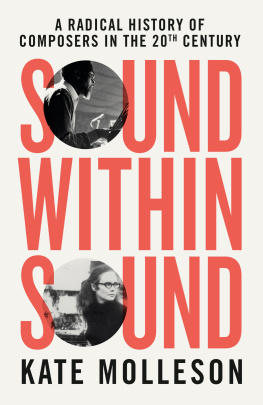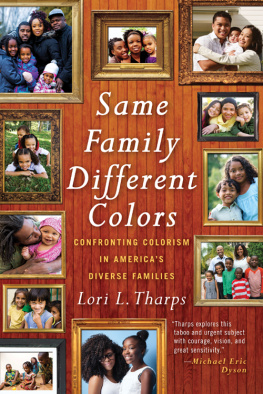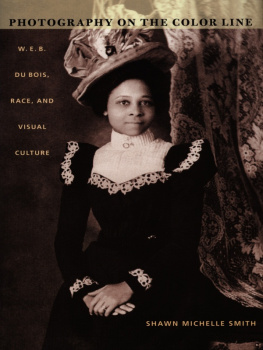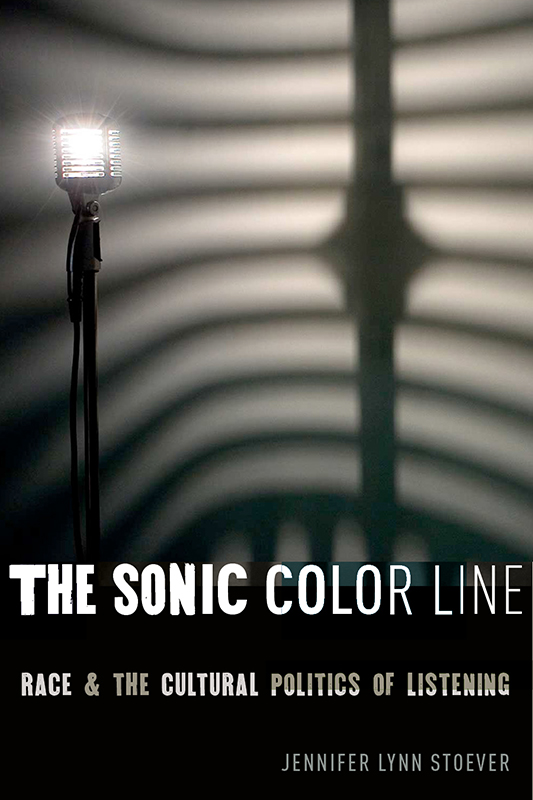Contents
Guide
Pagebreaks of the print version
THE SONIC COLOR LINE
POSTMILLENNIAL POP
General Editors: Karen Tongson and Henry Jenkins
Puro Arte: Filipinos on the Stages of Empire
Lucy Mae San Pablo Burns
Spreadable Media: Creating Value and Meaning in a Networked Culture
Henry Jenkins, Sam Ford, and Joshua Green
Media Franchising: Creative License and Collaboration in the Culture Industries
Derek Johnson
Your Ad Here: The Cool Sell of Guerrilla Marketing
Michael Serazio
Looking for Leroy: Illegible Black Masculinities
Mark Anthony Neal
From Bombay to Bollywood: The Making of a Global Media Industry
Aswin Punathambekar
A Race So Different: Performance and Law in Asian America
Joshua Takano Chambers-Letson
Surveillance Cinema
Catherine Zimmer
Modernitys Ear: Listening to Race and Gender in World Music
Roshanak Keshti
The New Mutants: Superheroes and the Radical Imagination of American Comics
Ramzi Fawaz
Restricted Access: Media, Disability, and the Politics of Participation
Elizabeth Ellcessor
The Sonic Color Line: Race and the Cultural Politics of Listening
Jennifer Lynn Stoever
The Sonic Color Line
Race and the Cultural Politics of Listening
Jennifer Lynn Stoever

NEW YORK UNIVERSITY PRESS
New York
NEW YORK UNIVERSITY PRESS
New York
www.nyupress.org
2016 by New York University
All rights reserved
References to Internet websites (URLs) were accurate at the time of writing. Neither the author nor New York University Press is responsible for URLs that may have expired or changed since the manuscript was prepared.
ISBN: 978-1-4798-9043-9 (hardback)
ISBN: 978-1-4798-8934-1 (paperback)
For Library of Congress Cataloging-in-Publication data, please contact the Library of Congress.
New York University Press books are printed on acid-free paper, and their binding materials are chosen for strength and durability. We strive to use environmentally responsible suppliers and materials to the greatest extent possible in publishing our books.
Manufactured in the United States of America
10 9 8 7 6 5 4 3 2 1
Also available as an ebook

A book in the American Literatures Initiative (ALI), a collaborative publishing project of NYU Press, Fordham University Press, Rutgers University Press, Temple University Press, and the University of Virginia Press. The Initiative is supported by the Andrew W. Mellon Foundation. For more information, please visit www.americanliteratures.org.
CONTENTS
For my grandma Maryanne (19232001), whose lovingly gruff, crumpled-paper-bag voice still carries me.
For my dad, Jeff (19482011), who first taught me how to listen, and whose brown Koss KO/747 headphones rest right next to my stereo.
For my son, Martin, who arrived amidst the writing of this book. You teach me to listen anew while letting me think I am teaching you. Your voice will always be my favorite sound. I love you more! Infinity!
ACKNOWLEDGMENTS
Can you sing out in the pouring rain? / Can you sing out, can you sing out?
Fishbone, Pouring Rain
In summer 2015, I was honored to thank Norwood Fisher and Angelo Moore of Fishbone in person for being my first, funkiest, and fiercest critical race theorists. Only because music is so very powerful do people create mechanisms like the sonic color line to contain it.
To my RUSD English teachers Kathy Rossi, Keith Lloyd, Katie Mackey, and Richard McNeil, who taught us public school kids how to think and write with a love and rigor that turned many of us toward futures we thought far beyond our reach. Thank you to art teachers Louis Fox and Italo DiMarco, for showing me to myself.
I have boundless love for my Riverside home folks: George Campos, Kim Earhart, Cara Cardinale Fidler, Kelly Herrera, Nova Punongbayan, Rodrigo Ramos, Joe Spagna, and especially my dearest familiaJulia Martinez, Sarah Parry, Karin Ribaudo, Jeff Ribaudo, Alison Sumner, Maria Unzueta-Hernandez, and last but certainly not least, Karen Tongson. Womb to tomb, birth to earth. Thank you to Juan and Alice and the Contreras-Martinez families, who helped raise me to be the woman I am today. The generosity and personal example of the Honorable Joe Hernandez II and Gloria Lopez sustained me through graduate school. Melissa Contreras-McGavin and Bradley McGavin, you are the wind beneath my wings.
I was fortunate to have a top-notch, affordable undergraduate education at UC Riverside. I first heard literature in Katherine Kinneys class; I still dream of delivering readings as on point as hers. I also benefitted from the brilliance and generosity of Emory Eliotgone too soonCarlos Corts, Jennifer Doyle, John Ganim, George Haggerty, Tiffany Ana Lpez, Peter Mileur (now my Binghamton colleague), Venetria K. Patton, and Margie Waller. Kevin Imamura remains a lifelong friend.
The six years I spent teaching public high school were not a detour from my education but an expressway to its heart. My former students still inspire me, especially Toussaint Bailey, Stephen Brockington, Sara Caro, Kristy Dougherty, J. R. Hale, Sarah Hill, Lakeisha Horne, Don Sargent, Tonya Sherfey, Sett Quinata, and the badass Odie Anaya.
These ideas were nurtured and shaped by my PhD study in American Studies and Ethnicity at the University of Southern California. I am grateful Viet Nguyen, George Sanchez, and Cynthia Young saw potential in my earliest work. Thank you also to USC faculty members who encouraged my research and showed me wonderful examples of professordom: Sarah Banet-Weiser, Alice Gambrell, Ruthie Gilmore, Bill Handley, Lanita Jacobs, Josh Kun, Teresa McKenna, Karen Pinkus, Laura Pulido, David Romn, Leland Saito, and Bruce Smith. Sharon Sekhon, now director of the Studio for Southern California History, gave heartfelt support. A timely visit by George Lipsitz convinced me I could feed myself writing about music. Kitty Lai, Sonia Rodriguez, and Sandra Hopwood kept my act together!
I remain especially indebted to Carla Kaplan, Joanna Demers, Judith Jackson Fossett, and Fred Moten. Carlas impeccable research acumen, tough-as-nails love, and insistence on my absolute best motivated me when I needed it most. Joannas work on electronic music and our walk-and-talks about the nature of noise charged me to listen differently. Judith had unwavering faith in me when my way was cloudy and will forever be my finest interlocutor; I am grateful for those nights at her table, drinking tea, listening to Stevie Wonder, and talking over her meticulous green-inked comments. Fittingly, words only inadequately describe my gratitude for Freds kind and prodigious example; his virtuoso riffs on blackness, sound, music, art, the academy, and politics rock my world then, now, and always.
I have sincere gratitude, love, and respect for the first three USC ASE graduate cohorts (20012003), with special shouts to Wendy Cheng, Michan Connor, Carolyn Dunn, Laura Sachiko Fujikawa, Jess J. Hernndez, Emily Hobson, Imani Kai Johnson, Viet Le, Sionne Neely, Daniel Wei Hosang, Nisha Kunte, Lata Murti, Phuong Nguyen, Luis Carlos Rodriguez, Ully Ryder, Anton Smith, Micaela Smith, Karen Yonemoto, and of course PhDivas Laura Barraclough, Ava Chin, Fiorella Cotrina, Michelle Commander, Araceli Esparza, Perla Guerrero, Nicole Hodges-Persley, Marci McMahon, and Cam Vu. Special amorcito to Hillary Jenks and reina alejandra pradoI love how our friendship continues to deepen. Much gratitude also to comrades across campus: Ruth Blandon, Zo Corwin, Bridget Hoida, Shakira Holt, Gustavo Licn, Lalo Licn, Patricia Literte, Brooke Carlson, Memo Arce, and Andy Hakim. I remain so thankful for the attentive eye of my dear friend and writing partner Priscilla Pea Ovalle. None of this would have been possible without you, homegirl!











